TAKEAWAY: This is part 11 of my occasional series 40 Years/40 Lessons, which I call a “sort of career memoir” capturing highlights and reminiscing about what has been a spectacular journey for me, doing what I love most. Today’s segment: all about the impact that culture has had for me personally and professionally.
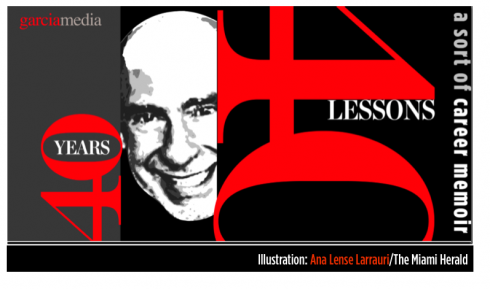
Illustration by Ana Lense Larrauri/The Miami Herald

Bicultural, multicultural
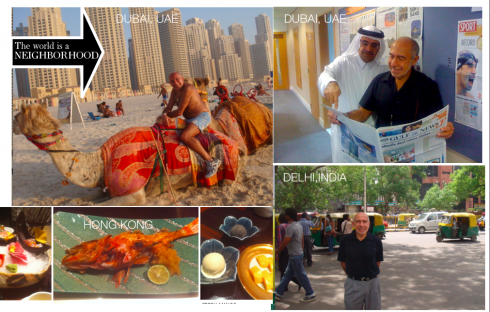


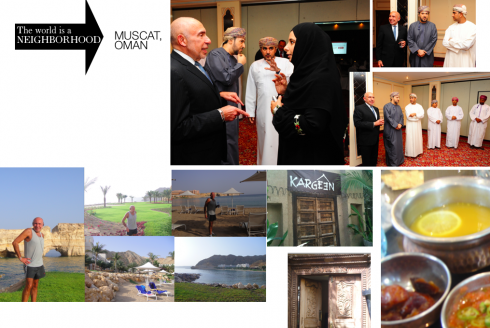
From time to time someone will ask me the question: Mario, you were born in Cuba, came to America as a young teenager, and have lived most of your life as an American, but travelling the world? Which culture defines you? Do you feel more Cuban? More American?
Sometimes I feel like a citizen of the world, and it is not a bad thing. Today, the world is our neighborhood, and fast, immediate communication and access to information make that neighborhood a smaller village all the time.
But, back to the question of culture and identification. I guess I am a bicultural person most of the time, with moments in which I feel extremely Cuban—-as when the smell of a good picadillo or the presence of a great artisanal Cuban dessert, like toronja en conserva, appears in view, not to mention when I hear Cuban music, when both feet are 150% Cuban each. Then, of course, I love America, my adopted homeland that took us in as refugees, something one never forgets. I love everything America, especially my American children and grandchildren, but also a good Macy’s Thanksgiving Parade, the Fourth of July fireworks, the sense of optimism and constant renewal that is the foundation of what we are as Americans—-even in the worst of times. I put my hand on my heart to recite the Pledge of Allegiance, and, if abroad, my eyes get misty when I hear the Star Spangled Banner. Sentimentally patriotic for the US, which I consider my country; symbolically and culturally attached to all things Cuban, especially the music, the art, the literature and the food.
With my sense of being a proud Cuban I honor not just the land where I was born, but also the memory of my parents, who were 100% true, patriotic Cubans until the very end; with my sense of respect, grattitude and patriotism for my adopted land, the US, I am a walking example that the American dream is possible and I hope to pass all of those feelings to my 11 grandchildren, who become part of the great American melting pot.
Work and cultures
Then comes the culture of work. I have worked in 96 countries in six continents to date.
With each project, in each new country, I learned enormously about the impact and influence that culture has in the way we talk, think and carry out our professional duties. An element of sustenaibility for me, 40 years in this business, has been to respect each of the cultures which I encountered in my work.
It was clear to me from that first trip to Argentina, in the late 1970s, to work with La Nueva Provincia, of Bahia Blanca, my first project outside the United States, that the first step in succeeding as a consultant in a foreign land was to show respect for how others think——-and, by the way, one does not have to leave the country or deal with a different culture to do that. Especially if one is an American consultant, one must avoid imposing views that others may consider to be “air of American superiority complex”. The first step for me in each engagement is to listen, to acquaint myself with the people and their culture.
As a runner, I take early morning runs thru every city in which I work. I observe my surroundings, how people decorate their windows, the colors they paint the outside of their houses in, even what they throw in their trash. How they treat their animals. How they advertise consumer goods in the streets. How they assemble, or follow traffic signs. All of this weaves the cloth that I sort of wrap myself in to deal with the project at hand.
Once inside the organization, I try to think as if I were a permanent part of this culture.
Culture and design
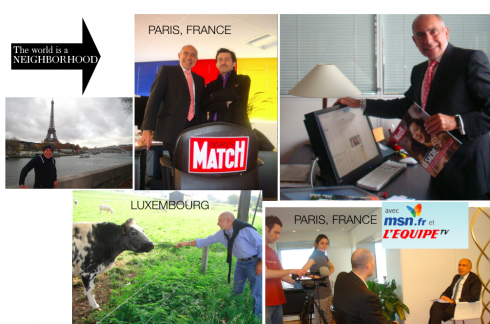
One cannot transfer a design model from Brazil to Scandinavia. Some ideas may be universal (navigation, legibility, clarity), but others vary distinctively (color, typography and, most importantly, a newspaper’s look and feel, which I have come to realize varies from country to country). There is not such a thing as a “newspaper look” that fits all.
What may be a classic newspaper look in one place constitutes a boring, “don’t go there” type of newspaper in another place. What may be loud, Carmen Miranda colors for one newspaper in Stockholm, are exactly the colors the doctor ordered for that newspaper in Fortaleza.
Appeal to the senses is important when one studies the likes or dislikes of a culture. I have always thought that the moment one steps out of an aircraft and walks the plank down to the baggage claim, one smells the country. Have you experienced this? If you disembark in Delhi, the first aroma of India embraces you in a welcome, but when you do the same in Buenos Aires, it is a totally different smell, as is Copenhagen or Moscow.
I usually let my senses capture the culture, visually and otherwise.
Be true to your cultural you
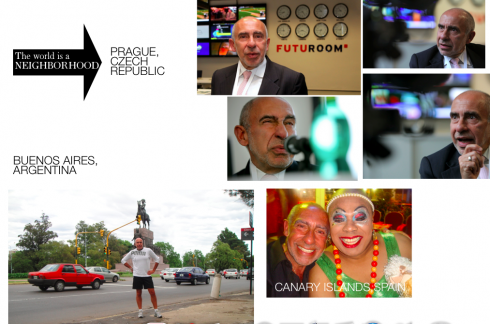
But I am also aware of two important things:
1. Those with whom I am working, are sizing me up for what they perceive to be my cultural background, just as I am doing it with them.
2. I must be true to my cultural values without sacrificing them as I respect those of the people with whom I work.
On item number one: I always get a kick out of the way my German or Scandinavian clients, for example, always see me as an exotic bird. Indeed, I may be one, and that is Ok with me. To the more reserved Nordic cultures, a person who, like me, talks with his hands, moves constantly during a presentation, never reads from a script, and ad libs along the way, reacting to the mood of the moment and the audience (blame this on my childhood acting days in Cuba?) is, indeed, an exotic breed of whatever. The fact that I insist to be treated with the informal Mario, as opposed to Dr. Garcia (it is always most troublesome to get them to do that in Austria, for some reason), that I talk to everyone the same way, from the CEO and owner to the lady who brings me coffee and water, is something many find strange.
And, of course, I cannot begin to tell you the number of times that a foreign client will tell me, in flattering tones: Well, Mario, you live in the US, but you are not a typical American.
A typical American, what is that?
I smile, knowing they are trying to tell me something nice, and I never open the Pandora’s box to ask: what is a typical American?
In Latin America, however, my clients always tell me; You think like a yankee.
There you go. Why do I think like a yankee? Because I insist on punctuality, following deadlines, the American work ethic.
As one Colombian editor put it to me: “Mario, you are packaged like a Cuban with the head of an American.”
Talk about picturesque language with a cultural twist.
It is not all roses and flattering statements, no sir.
Readers of this blog know that the makings of Die Zeit, Germany’s intellectual weekly, remains my most difficult project to date. Why? The German editors thought an American could never understand German culture. (Go here to read a blog post on that: https://www.garciamedia.com/blog/articles/40_years_40_lessons_10positive). It was a wake up call for me. Perhaps I had not understood German culture as well as I should. So I immersed myself in a learning process. It happened.
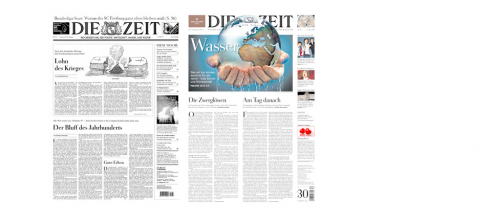
Preserving the concept of German elegance in Die Zeit: before and after redesign images appear here
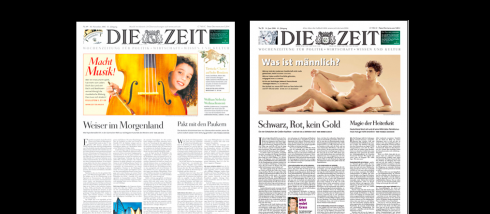
Die Zeit: purely Germanic in look and feel!
At times, perceptions of culture get on the way of moving on with a project or, as in the aftermath of the project, as was the case with The Wall Street Journal. It was 2001 and we were granting a lot of interviews to launch the new look of the WSJ. Repeatedly, reporters would latch to the connection between a former refugee who arrived in the US as a child escaping communism now redesigning the ultimate tool of American capitalism. At first it was fun to talk about it, eventually, it kept me from talking about the real changes in the design of the newspaper and how it would be easier to navigate it. In this case, culture “comparisons” appealed more interesting to many reporters than the story at hand: the visual change of The Wall Street Journal.
I must admit that at moments like that you feel like your cultural background is a heavy steelcase suitcase and you wish the airline would lose if for two or three days, as happens with my real suitcases at least twice a year.
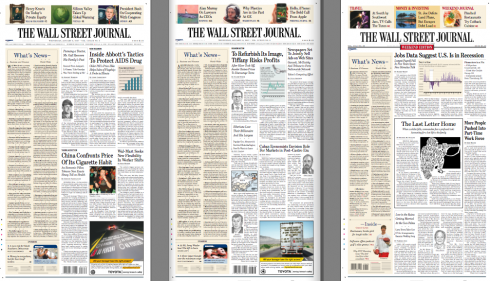
It made for good copy, of the cultural clashing kind: Cuban refugee helps redesign the ultimate American capitalistic tool!
Fortunately, we are what we are, the total result of our cultural backgrounds, and we carry the culture suitcase wherever we go.
Mine is a little heavier because it carries two solid cultures that are part of me and of which I am proud, plus the goodies and the essence of the many cultures that I have come to admire and to embrace during the past 40 years.
A frame that hangs in my office at home in Florida, and which my wife Maria gave me over 25 years ago, sums it up best:
I am a better person having seen the sun rise on the other side of the world.
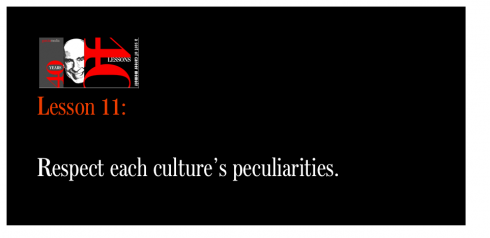
Post-script: As I finish editing this segment # 11 of 40 Years/40 Lessons, I happen to be in Russia, and let’s say that both of the personal cultural entities that I represent pose a bit of a handicap with some, not all. As an American consultant I am perceived with the doubtful eye that casts anything America, the sort of “we love you and we hate you” attitude that may date back to the days of the Cold War and the USSR. But, oh, the Cuban connection ain’t so good either. There are some here old enough to remember when the Soviets made Cuba their second home, and that meant sending funds and goodies to the Caribbean island, which the locals perceived as “taking it from us to give to Castro”. So, better to be a citizen of the world here, evoking things from both of my cultures which generate smiles and positive reactions: American movies and Cuban mojitos.
Today’s iPad app “pop up” moments
Two pop up moments from Germany’s Bild’s iPad app today, contributed by our TheMarioBlog correspondent in Luxembourg, Frank Deville:
One depicts a well known football player, known for his monetary ambitions, eating money. In the second clip, a former German athlete shows her newly done nose.
More on what constitutes modern newspaper design
Just in from Gabriela Lendo, of Spain’s Vostok, with a follow up to our previous blog post about the use of the term “modern” to describe a newspaper’s design.
Here is what Gabriela wrote me:
Quick email just to say your ‘modern newspapers’ post was great food for thought. As a follow up, we decided to expand on the information we sent you. We prettied up the table and fine tuned certain aspects and we posted the information in our blog.
Here is the link:
http://www.vostok.es/blog/online-newspaper-design-expired-vs-modern#comments
TheMarioBlog post #704